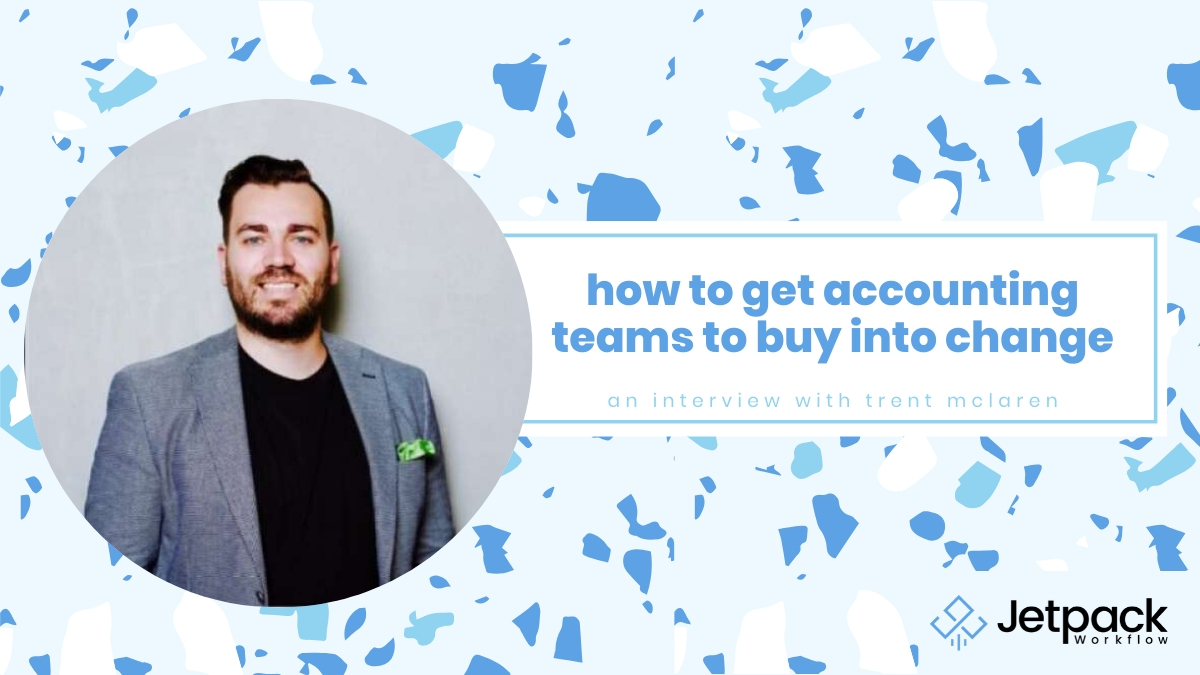How To Get Accounting Teams To Buy Into Change

Trent McLaren, senior business development manager at accounting titan Intuit, works closely with accounting firms especially when it comes to getting a buy-in to your ideas and new technology.
Trent stresses that “streamlining” and removing the redundant tasks allow you to save money hiring team members you don’t need. Plus, open the door for other profit arms to enter your firm.
In this episode of the Growing Your Firm Podcast, David Cristello and Trent McLaren dive into:
- The importance of having the right tech set up in your firm
- How to think about innovation in your firm
- Steps to get your team to buy-in to your ideas and to new technology
ADDITIONAL LINKS:
- Trent McLaren
- Linkedin – Trent McLaren
- Twitter – Trent McLaren
- Facebook – Trent McLaren
- 5 Tools to Improve Your Accounting Firm
- Finding the Right Software for Accountants (interview)
Having the right tech in your firm:
Accounting gets a nasty reputation as being the “last” to pick up new technology. Many times, it is due to older partners who started the firm years back who don’t want to change up their old habits.
We’ve never seen as much new technology as we have since the turn of the century.
Trent McLaren, senior business development manager at Intuit, is in the trenches everyday with firms helping them adjust. Even Intuit has seen itself morph in the last decade to building a very robust cloud accounting program with dozens of apps.
“You should be looking ahead to the next 18 months and
what might change in the accounting world.”
– Trent McLaren
By 2025, Trent estimates that over 5,000,000 jobs will be replaced by tech.
Yes, taking the time to implement new technology takes time and effort. The point is: To remove redundancy and save your team members time they don’t need to spend.
Accounting firms are beginning to expand globally. Meaning, they aren’t just working with local clients in person. Many are taking on virtual clients across the world.
For you, now, think about:
- Where are team members having to “copy and paste” things?
- Are you having to import and export into Excel and other programs?
- Where are you having to make manual entries and calculations?
These are just a few of the areas where you need to start thinking about, “Is there an application that can streamline this?”
Most likely, there is already an API plug-in somewhere to save the time. Automating double-entry tasks like this could open time on your team’s calendar (or even yours) so you can push off having to make an expensive hire.
How to think about innovation in your firm:
When Jetpack Workflow started building workflow software, David talked with multiple firm partners to understand the problems that existed.
Trent recommends this approach.
“When you think about innovation, do it from the
perspective of the customer.”
Where are the headaches and time-wasting tasks? You want to approach it this way so you’re thinking of actual solutions to problems, and not just “extras.”
Your “customer” during this process could actually be your employees. Where are these processes they hate? Are there bottlenecks in the same places again and again?
Where are the problems? Where do things take too long to get done?
Innovation isn’t just about ‘new technology.’ It’s actually simply doing things different than you used to. Trying a new process. Trying a new tool.
Approaching innovation:
- Sit down with your team and walk in their shoes (or your client’s shoes)
- Write down every tiny problem that happens. Every frustration or things that many regularly complain about
- Now, throw out the editing board (not literally). But, begin brainstorming ideas on how to solve the problems. NOTHING IS OFF LIMITS. Come up with crazy ideas on how something might get fixed
When you start innovation this way, you already took the first step to get buy-in to your ideas.
Steps to get your team to buy-in to your ideas and new technology:
If you did bullet point #3 above, you’re already on your way to getting team members onboard to new processes and ideas.
Again, firms don’t innovate regularly typically because the head of the firm or its team members don’t buy-in to your ideas. The easy way to solve this?
Get your accounting team on the ground floor of the idea!
Engage team members to be the “change agents” (as Trent says) themselves. Don’t make your own personal crusade.
When you bring your team together to discuss innovation, find an idea and then assign tasks to various team members.
Have one person do research. Another research reviews and case studies. Have another be the “guinea pig.” Another prepare the steps to help the rest of the firm implement.
Give everyone various tasks to do. Have regular follow-up meetings. Discuss the problems they are seeing with solutions. Brainstorm some more. Repeat.
The key point you must get across to them: “WHY we are doing this…” Your team needs a concrete, proven reason for making any changes.
That’s why, if you get them involved from the beginning, they can understand more and more. Rather than doing what most firms do wherein the partners roll out something new without warning which inevitably causes stress and headaches.
The process can take a while and go through many hiccups. Don’t worry about that. You might spend a long time in the research phase going through solutions and ideas only to find the problem isn’t the biggest one you need to solve.
That’s what innovation looks like!
What have you done recently to innovate your firm?
Related Articles:












